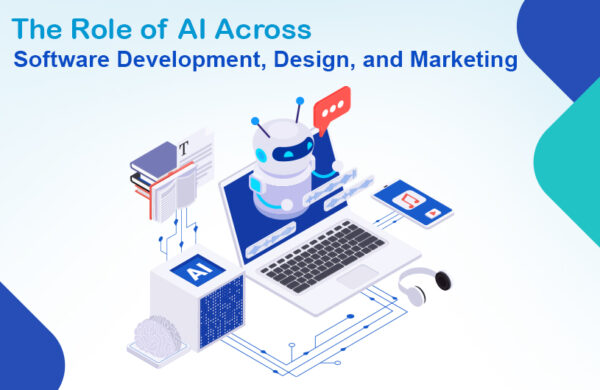Augmented reality (AR) has revolutionized the way we interact with digital content, merging the real and virtual worlds seamlessly. In this blog series, we explore the convergence of Flutter, the popular cross-platform UI framework, with AR technology to create immersive AR experiences in your mobile apps. Whether you’re an experienced Flutter developer or new to both Flutter and AR, this series will guide you through the process of integrating AR functionalities into your apps.
What is meant by Augmented Reality?
Augmented Reality (AR) refers to a technology that overlays virtual elements, such as images, animations, or data, onto the real-world environment, enhancing the user’s perception and interaction with their surroundings. Unlike virtual reality (VR), which creates a completely immersive digital environment, AR supplements the real world with virtual objects, blending them seamlessly to provide an augmented view of reality. AR experiences can be delivered through various devices, including smartphones, tablets, smart glasses, and headsets, allowing users to interact with the virtual elements in real-time while maintaining a connection with the physical world. AR technology has found applications in diverse fields such as gaming, education, retail, healthcare, architecture, and more, enabling innovative and interactive experiences that bridge the gap between the digital and physical realms.
Benefits of Augmented Reality
Augmented Reality (AR) offers several benefits across various industries and applications. Here are some key advantages of utilizing AR technology:
- Enhanced User Experience: Through the addition of virtual features to the physical world, augmented reality (AR) offers a rich and engaging user experience. Users may interact with digital information in a more natural and intuitive way because of it, which boosts their enjoyment and engagement.
- Improved Visualization: AR helps users visualize and comprehend complex information or concepts by overlaying virtual objects or annotations onto real-world objects. It can be particularly valuable in fields such as architecture, design, and education, where visualizing and understanding spatial relationships is crucial.
- Real-Time Information: AR allows for the real-time delivery of information, data, and instructions directly within the user’s field of view. This can be highly useful in scenarios like navigation, where AR can provide turn-by-turn directions or display points of interest in the user’s surroundings.
- Virtual Try-On and Product Visualization: In e-commerce and retail, AR enables virtual try-on experiences, allowing customers to visualize products, such as clothing, accessories, or furniture, in their real environment before making a purchase decision. This enhances customer confidence and reduces the likelihood of returns.
- Training and Education: AR can be leveraged for interactive training experiences and educational simulations. It enables users to practice and learn in a safe and controlled virtual environment, enhancing knowledge retention and skills development.
- Marketing and Advertising: AR offers innovative marketing opportunities by creating interactive and engaging campaigns. Brands can use AR to provide immersive product demonstrations, gamified experiences, or interactive advertisements, attracting and retaining user attention.
- Remote Collaboration: AR facilitates remote collaboration by allowing users to share a common augmented environment. Users can collaborate on projects, visualize, and manipulate virtual objects simultaneously, regardless of their physical location, fostering teamwork and productivity.
- Safety and Maintenance: AR can assist in industrial settings by providing real-time instructions and visual aids for complex tasks. It can overlay step-by-step guides or highlight potential hazards, improving safety and reducing errors in maintenance and assembly processes.
- Data Visualization: AR can transform complex data sets into visual representations, enabling users to understand and analyze information more effectively. By visualizing data in the real world, AR enhances data exploration, decision-making, and problem-solving capabilities.
Overall, augmented reality offers numerous benefits by merging the physical and digital worlds, enhancing user experiences, improving productivity, and opening new possibilities for innovation across industries.
Also Read: – What’s the Difference between AR, VR, MR
What is meant by Flutter Reality?
Flutter is an open-source framework used for building native mobile applications for iOS, Android, and web platforms from a single codebase. It allows developers to create beautiful and responsive user interfaces using a reactive programming model. With Flutter, developers can write code in the Dart programming language, and the framework provides a rich set of customizable UI widgets, along with tools and libraries for various functionalities.
Flutter is known for its fast development cycle, hot-reload feature (which allows developers to see the changes in real-time), and its ability to deliver high-performance applications with a native-like user experience. It has gained popularity in the mobile app development community due to its efficiency, flexibility, and ability to create visually appealing interfaces.
Also Read:- The Future of Application Modernization: Trends to Watch in 2023
Implementation of flutter and Augmented reality in your app.
Implementing Flutter and augmented reality (AR) in your app involves integrating AR functionality into your Flutter project. Below mentioned are the steps you must follow:
Set up your Development Environment:
- Download and install the Flutter SDK and set up your programming environment.
- Configure your preferred code editor or IDE (e.g., Visual Studio Code, Android Studio) for Flutter development.
Choose an AR Library/Framework:
- Research and choose an AR library or framework that is compatible with Flutter.
- Popular options include ARKit (for iOS) and ARCore (for Android), as they provide AR capabilities specific to each platform.
Add Dependencies:
- Update your Flutter project’s pubspec.yaml file to include the necessary dependencies for AR integration.
- Specify the AR library/framework you have chosen, and any other relevant plugins or packages required for AR functionality.
Learn AR Concepts and APIs:
- Familiarize yourself with the concepts and APIs provided by the AR library/framework you selected.
- Understand key AR concepts like marker-based tracking, plane detection, and object recognition, depending on your app’s requirements.
Design AR User Interface:
- Utilize Flutter’s widget system to design and create the user interface for your AR features.
- Combine Flutter’s UI elements with AR components to blend virtual and real-world elements seamlessly.
Implement AR Features:
- Utilize the AR library/framework’s APIs to implement AR features such as object tracking, scene rendering, and interaction with virtual objects.
- Incorporate gestures, touch interactions, and animations to enhance the user experience.
Test and Debug:
- Test your app on AR-capable devices or emulators/simulators to ensure proper functionality.
- Debug and troubleshoot any issues that arise during testing.
Optimize Performance:
- Optimize your app’s performance by following best practices for memory management, rendering efficiency, and frame rate optimization.
- Consider device-specific limitations and adapt your implementation accordingly.
Iterate and Refine:
- Continuously iterate on your app’s AR features, gathering user feedback and refining the user experience.
- Keep up to date with the latest advancements and updates in the AR and Flutter ecosystems.
Remember, the specific implementation details may vary based on the chosen AR library/framework and the requirements of your app. It’s crucial to refer to the documentation and resources provided by the AR library/framework you are using for detailed instructions and examples.
By combining the power of Flutter’s UI capabilities with the immersive nature of AR, you can create engaging and interactive experiences that blend the virtual and real worlds in your mobile app.
Conclusion
In conclusion, our blog series on “Flutter and Augmented Reality: Creating AR Experiences in Your App” has explored the exciting possibilities of integrating Flutter with augmented reality to develop captivating and immersive mobile applications. Throughout this series, we have covered various aspects, including understanding AR concepts, setting up the development environment, exploring AR libraries and frameworks, building AR user interfaces, tracking, and anchoring objects, adding interactivity and animation, and optimizing performance.
As we wrap up this series, it is worth mentioning the remarkable innovation happening in the AR space. One such notable innovation is Monarch, an emerging AR platform that has caught the attention of developers and users alike. Monarch revolutionizes AR experiences by providing a versatile and user-friendly platform for creating and deploying AR content. With its intuitive interface, robust feature set, and cross-platform compatibility, Monarch simplifies the process of building AR applications and unleashes the creative potential of developers.





